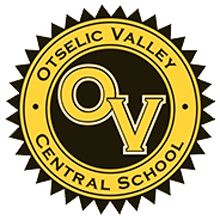What is STEM and how does it fit into OV? STEM stands for Science, Technology, Engineering, and Math. STEM isn’t a list of classes, however – it’s an approach that integrates all subjects using real-world teaching. Instead of memorizing facts, students learn how to use what they know to solve problems. Instead of finding one right answer, students use flexible thinking as well as their technical knowledge. Instead of putting information on paper, they apply what they’ve learned. STEM education is active and exploratory, and it equips Vikings with 21st century skills and capacities, including creativity. “I think because STEM groups together all academic disciplines, like combining coding and cross-over disciplines, everything relates. In the real world, some careers use science with technology and math with everything,” explained Technology teacher Marisa Rice. "STEM is an approach." While science, technology, math, and even basic engineering can be found in classes and grades all year long, STEM-specific teaching puts it all together. Sixth graders work on STEM projects with Ms. Rice at least twice weekly, for example. Students used Snap Circuits to create circuit boards, which was, in part, a powerful lesson about attention to detail. They also completed a restaurant project in which they imagined a restaurant, built a website, and crafted a menu. Now they are working on a research project about mathematicians that involves researching, writing, and presenting about these historical, logical thinkers who led diverse lives (Sophie German and Maria Agnesi were favorites). Coming up is an engineering project that requires construction using household materials. STEM shows up in 8th grade Agriculture education too. Miss Parrott provides hands-on electronics training that builds on basic information learned in 6th grade. Using Tronix Lab materials, students build circuits that show how electricity moves. When working with circuits they use teamwork, problem solving, and attention to detail to illuminate a light bulb, then move to a potentiometer, then move to both a potentiometer and a speaker so they can control volume. In the High School Technology class, students use Python coding language to develop problem-solving skills, learn to build code, and then get it to run. They learn how computers run and explore binary function (where everything is written in zeroes and ones). This week they are working with data sets, and creating a code with specific maximums and minimums. Ms. Rice is noticing that Vikings are good at this. “Students are interested in techy things and gaining more knowledge. They pick this up quick – they are so in tune. They’ve grown up in a world with technology, and I can see it.” Resources for some of these projects come from the Amazon Future Engineer Program grant for Middle School which Otselic Valley won last year, following an application by Mrs. Richards. Going forward, the grant will also be extended to the High School so more can be available to students. “Technology is important because it’s the age we live in," Ms. Rice said. "It’s evolving every day, and we can gear kids to be prepared for the life they’re going into.” [Watch our Facebook page for examples of student projects.]

What is STEM and how does it fit into our school?
January 20, 2022
